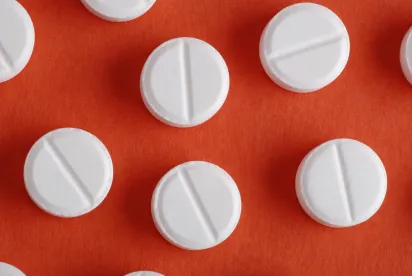The Orphan Drug Act provides two mechanisms by which a drug can receive an orphan drug designation: (1) if it affects less than 200,000 persons in the United States, or (2) if it “affects more than 200,000 in the United States and for which there is no reasonable expectation that the cost . . . will be recovered from sales in the United States of such drug.” See 21 U.S.C. § 360bb(a)(2). H.R. 4712 (the “Fairness in Orphan Drug Exclusivity Act”), which passed the House on November 17, seeks to amend the latter “cost recovery” pathway in order to address what has been called a “loophole” in the Act.
The “loophole” and its consequences were summarized in written testimony submitted to the House. As explained therein, the buprenorphine-containing sublingual tablets Suboxone and Subutex received an orphan drug designation in 1994 for the treatment of opiate addiction. Opiate addiction—then as now—was not a “rare” disease: to obtain this designation, their sponsor argued that “the drugs would not be economically viable, citing sales projections that assumed that buprenorphine prescribing would only be allowed in the small number of treatment centers that dispensed methadone.” Following their approval in 2002, however, these drugs collectively resulted in billions of dollars in sales.
This designation was grandfathered to the company’s later products. In 2017, Sublocade, a once-monthly buprenorphine injection, was approved as an orphan drug to treat opioid abuse—despite the demonstrated economic viability of buprenorphine products—and the resulting seven-year period of exclusivity would preclude the marketing of new buprenorphine products for opioid use disorder.
Following a citizen petition, the FDA revoked Sublocade’s orphan drug designation in November 2019. In doing so, FDA revisited the question of “whether orphan-drug designation was appropriately granted” under § 360bb(a)(2)’s cost recovery analysis, and whether “the assumptions underlying [FDA’s] decision that buprenorphine met the designation standard were reasonable at the time of the designation request.” Answering in the negative, FDA cited two independent considerations:
-
FDA found “it was not reasonable to assume that the market size would remain constant for the first seven years of marketing of buprenorphine” either because “it was not reasonable to assume that the laws restricting access to treatment . . . with opioids were unlikely to change” or “because it was not reasonable to assume the number of treatment facilities would not increase.”
-
It also observed that the analysis “did not account for [other forms of] buprenorphine products . . . in estimating potential costs and revenue, and therefore FDA did not have the information necessary . . . to properly evaluate the designation request.”
H.R. 4712, which was introduced in the House one month before the FDA revoked Sublocade’s designation, seeks to amend 21 U.S.C. § 360cc by adding a new exclusivity-limiting provision. If enacted, it would clarify sponsor obligations under § 360bb(a)(2)’s cost recovery pathway by requiring certain showings:
-
For drugs approved or licensed after enactment, the FDA will not grant exclusivity upon its approval unless the sponsor demonstrates that “there is no reasonable expectation at the time of such approval or issuance” that the specified costs will be recovered from U.S. sales, including “all sales made or reasonably expected to be made within 12 years of first marketing the drug.”
-
The requirement is essentially the same for drugs “approved or licensed on or prior to enactment” of H.R. 4712: the sponsor must demonstrate “there was no reasonable expectation” of recovery “at the time of such approval or issuance” of these drugs.
-
In this showing, the FDA and the sponsor must consider sales from “all drugs” which “are developed or marketed by the same sponsor or manufacturer” or “related entit[ies],” and “are covered by the same designation.”
-
A drug shall not be eligible for exclusive approval or licensure “unless it met such criteria under such subsection on the date on which the drug was approved or licensed.”
Speaking in support of H.R. 4712’s, Rep. Walden found that it preserved the balance of incentives under the Orphan Drug Act:
[e]xisting law allows an orphan drug designation and marketing exclusivity to carry forward to future versions of the same drug without requiring the manufacturer to demonstrate the drug has not been, and remains unlikely to be, profitable. This legislation closes that loophole. It requires manufacturers to demonstrate there is no reasonable expectation that the costs of research and development will be recovered for each successor drug, while still preserving incentives for orphan drug development.
Other representatives described its potential impact as limited, but important: Rep. Pallone described it as “narrowly tailored” and “a fix for a small but very real loophole in the law,” and Rep. Dean remarked that “[i]mportantly, this legislation is narrowly tailored and would not affect any product” designated under § 360bb(a)(2)’s criterion of affecting fewer than 200,000 people.
As cost recovery-based designation is already rarely used, the impact of H.R. 4712—if passed—may not be widely felt. It has been referred to the Senate Committee on Health, Education, Labor, and Pensions, where a companion bill, S. 3271, has been pending in the same committee since February 2020. We will continue to monitor their progress and provide updates.



 />i
/>i
